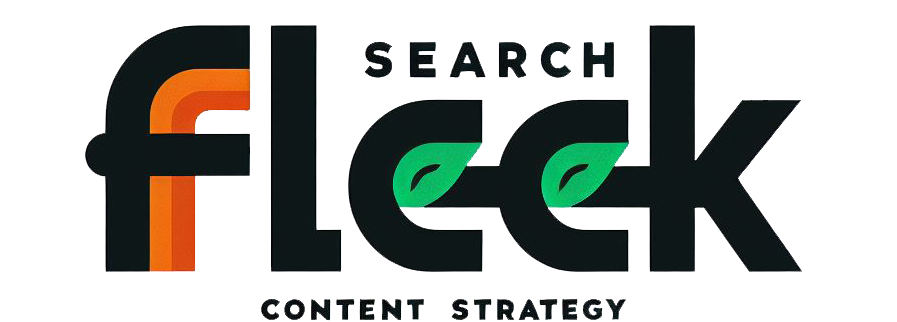In the world of content marketing, calls to action (CTAs) are your secret weapon. These powerful prompts nudge readers towards taking a desired action, whether it’s subscribing to your newsletter, downloading a free guide, or making a purchase.
But where you place these CTAs within your blog post can significantly impact their effectiveness.This guide delves into the art of strategic CTA placement, helping you maximize engagement and conversions throughout your content.
Understanding Reader Behavior and CTA Placement

People don’t always read online content word-for-word. Studies show they often follow an F-shaped or Z-shaped pattern, focusing on headlines, subheadings, bolded text, and the beginning and end of paragraphs. This behavior is crucial for understanding where CTAs will be most effective.
Reader Scanning Patterns and CTA Placement:
Top of the Post:
Leverage the F-pattern by placing a strong CTA at the beginning of your post. This could be a teaser for valuable content offered later (e.g., “Download our free SEO checklist at the end of this post!”) or a question that piques reader interest and entices them to continue reading (e.g., “Struggling with website traffic? Learn how to skyrocket your visitors in 5 easy steps!”).
Mid-Content CTAs:
Don’t neglect the middle of your post. As readers scan and engage with your content, place CTAs at relevant points to address their specific needs. For instance, after discussing a common pain point in home improvement, you could offer a CTA like “Get a free quote for your dream kitchen renovation today!”
Bottom of the Post:
This is prime real estate for a strong CTA that summarizes your key takeaways and compels action. Did you provide a step-by-step guide on travel photography? Encourage readers to put those tips into practice with a CTA like “Book your next adventure and capture stunning photos!”
The Importance of Content Relevance:
The best CTAs are those that seamlessly integrate with the content and cater to the reader’s needs at that specific point. Here’s how CTAs can differ based on the buyer’s journey:
Awareness Stage:
If your post aims to raise awareness about a new product, your CTA might be to “Sign up for email updates to learn more about the latest features!”
Consideration Stage:
For content focused on product benefits, a CTA like “Download our product comparison guide to see how we stack up!” would be more relevant.
Decision Stage:
When guiding readers towards a purchase, a CTA with a clear value proposition is key, for example, “Get 20% off your first order – Buy now!”
Balancing Frequency and Intrusiveness:
While CTAs are essential, bombarding readers with too many can be counterproductive. Aim for a balance that keeps your content informative and avoids disrupting the reading flow. Here’s how:
- Limit the number of CTAs: Stick to 2-3 CTAs strategically placed throughout your post.
- Vary CTA placement: Don’t just rely on the bottom of the post. Utilize CTAs within the body of your content for a more natural flow.
- Keep CTAs concise and visually distinct: Use clear language and contrasting colors or buttons to make your CTAs stand out without being overwhelming.
Strategic CTA Placement Throughout Your Blog Post

Now, let’s delve deeper into specific locations within your blog post where CTAs can shine.
The Introduction Hook:
Your blog post’s introduction is your chance to grab attention and set the stage. A well-crafted CTA can be a powerful tool for this purpose. Here are some examples:
- Food Blog: “Looking for delicious and easy weeknight meals? Download our free meal prep guide for busy families!”
- Travel Blog: “Dreaming of an unforgettable European adventure? Get our insider tips for planning your perfect trip!”
- Fitness Blog: “Ready to finally reach your fitness goals? Sign up for our free 7-day workout challenge!”
Mid-Content CTAs:
The body of your blog post is where you provide valuable information and address your reader’s specific needs. Here are a few ways to incorporate CTAs within this section:
Listicles and Step-by-Step Guides:
After each step or list item, consider a mini-CTA that encourages readers to take a specific action related to that point. For example, in a listicle about “5 Must-Have Apps for Every Photographer,” a CTA after each app could be “Download a free trial and start editing your photos today!”
Addressing Pain Points:
Have you identified a common pain point in your content? Let’s say you’re writing a blog post about “Common Skin Care Mistakes and How to Avoid Them.” After explaining a particular mistake, you could offer a CTA like “Get a free personalized skincare consultation with our experts!” This directly addresses the reader’s concern and provides a solution.
The Compelling Conclusion:
The conclusion of your blog post is your chance to leave a lasting impression and motivate readers to take action. A strong CTA here can significantly boost conversions.
Summarize Key Takeaways:
Briefly remind readers of the valuable insights they gained from your content. Then, use a CTA that encourages them to leverage that knowledge. For example, if your post discussed “The Ultimate Guide to Backyard Vegetable Gardening,” your CTA could be “Start growing your own fresh produce today! Shop our collection of organic seeds now!”
Power Words and Clear Calls to Action:
Don’t underestimate the power of strong verbs and clear language in your CTAs. Instead of a generic “Click here,” use action verbs like “Download,” “Subscribe,” “Buy Now,” or “Get Started.”
Here’s an example with weak and strong CTAs for a fashion blog post:
- Weak CTA: “See our new collection.”
- Strong CTA: “Shop the latest trends now and get 15% off your first order!”
Bonus CTA Placement Options:
While the above examples focus on CTAs within the written content, there are other strategic placement options:
- Images and Visuals: Include CTAs within compelling images or infographics. This can be a subtle way to grab attention and encourage clicks.
- Captions: Don’t forget about captions! Add CTAs to captions under images or videos, enticing viewers to take action.
- Social Media Sharing Buttons: Make it easy for readers to share your content with built-in social media sharing buttons. Consider adding a CTA within the button text itself, like “Share this post and help your friends!”
Slide-In Calls-to-Action
One effective method to boost engagement that I did not cover earlier is the use of Slide-In Calls-to-Action (CTAs). Unlike static CTAs, which remain fixed at the bottom or within the content, slide-in CTAs dynamically enter the reader’s view as they scroll down a blog post. This interactive feature can significantly increase clickthrough rates (CTR) and drive more conversions.
Why Slide-In CTAs Work
According to HubSpot, slide-in CTAs had a 192% higher CTR compared to static CTAs at the bottom of the post. They also generated 27% more submissions despite having a slightly lower conversion rate (CVR). This indicates that the higher volume of clicks compensates for the lower CVR, making slide-in CTAs a valuable tool for increasing overall engagement .
Placement and Design
A slide-in CTA typically appears from the right-hand side of the screen (or below sidebar content if applicable), ensuring that it doesn’t cover the main text. Here’s how to strategically implement it:
- Trigger the slide-in when readers scroll past 50% of the post or after a few seconds on the page.
- Make the design simple yet attention-grabbing with bold colors and compelling text, without disrupting the reading experience.
Crafting Effective CTAs That Convert:
A well-written CTA is more than just a button. Here’s how to craft CTAs that resonate with your audience and drive results:
Clear and Concise Language:
People don’t have time to decipher cryptic messages. Use clear, action-oriented verbs that leave no room for confusion. Here are some examples:
- Weak CTA: “Learn more about our services.”
- Strong CTA: “Schedule a free consultation with our experts today!”
Highlighting Value Proposition:
Don’t just tell readers what to do, tell them why it benefits them. Focus on the value they’ll receive by taking action. Here’s an example for a finance blog:
- Weak CTA: “Sign up for our newsletter.”
- Strong CTA: “Get weekly investment tips and grow your wealth – Sign up for our free newsletter!”
Creating a Sense of Urgency (Optional):
In some cases, scarcity or limited-time offers can create a sense of urgency and encourage immediate action. However, use this tactic strategically to avoid sounding pushy. Here’s an example:
- CTA: “Limited time offer! Get 50% off our bestselling product – But hurry, this offer ends in 24 hours!”
A/B Testing and Optimizing Your CTAs:
The best way to determine which CTAs work best for your audience is through A/B testing. This involves creating variations of your CTAs and testing them on different segments of your audience to see which ones generate the most clicks or conversions.
Track Key Metrics:
Once you’ve implemented CTAs, monitor their performance using website analytics tools. Key metrics to track include click-through rates (CTRs) and conversion rates.
Analyze Data and Refine:
Analyze the data from your A/B tests to see which CTAs resonated most with your audience. Use this information to refine your CTAs for future blog posts and continually improve their effectiveness.
Conclusion
By strategically inserting CTAs throughout your blog post, you can significantly increase engagement, conversions, and ultimately achieve your content marketing goals. Remember, CTAs are a conversation starter, not an ending.
Use them to guide readers towards valuable resources, encourage interaction, and build a loyal following. So, craft compelling CTAs, place them strategically, and watch your blog posts transform from informative reads to action-oriented powerhouses.
Emon Anam, CEO of Search Fleek, isn't your typical digital guru. He brings a unique blend of financial expertise (former banking pro!) and digital marketing mastery to the table. A self-proclaimed "SEO Sherlock Holmes," Emon unlocks content secrets for local businesses and SaaS companies. But beyond the keyboard, he's a devoted family man, music enthusiast, and cricket champion. Let Emon weave your digital success story!
AI Writing Disclaimer
This post was initially researched and outlined by me. The content was then generated by an AI language model using the provided information. The final text has been reviewed and edited by me for accuracy and clarity.




